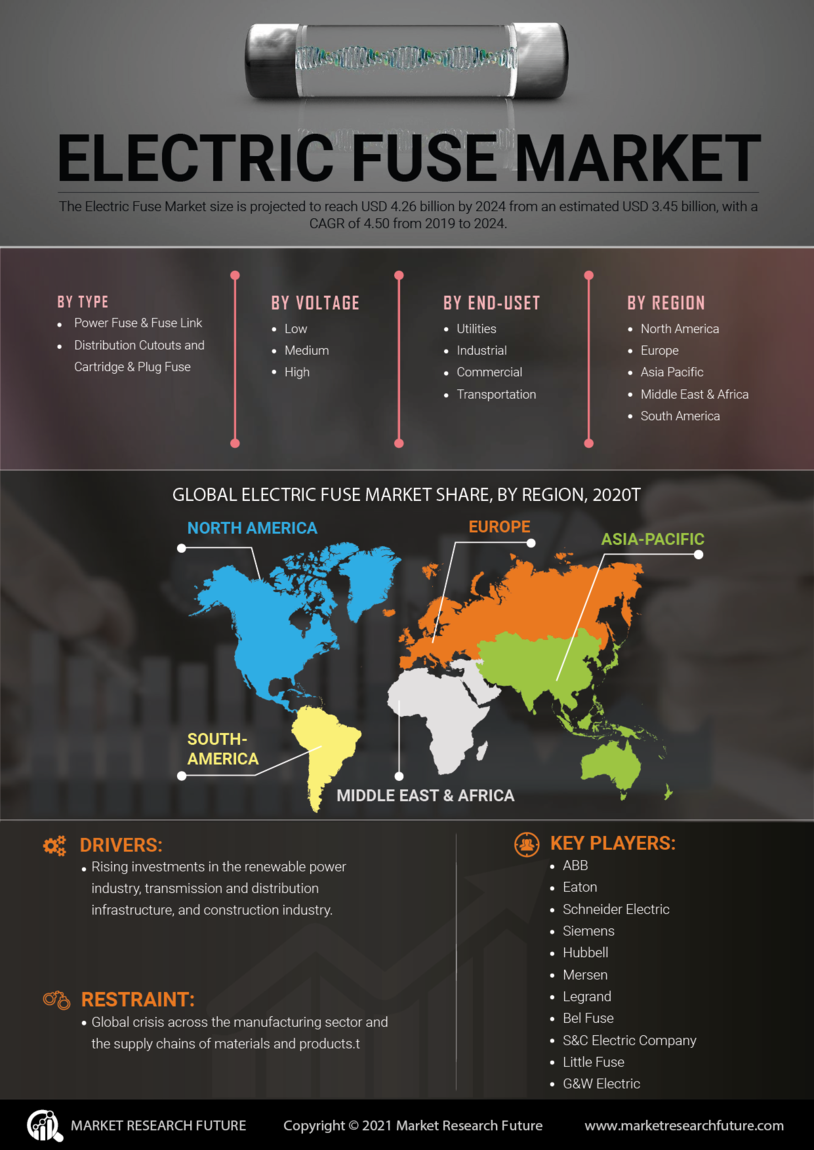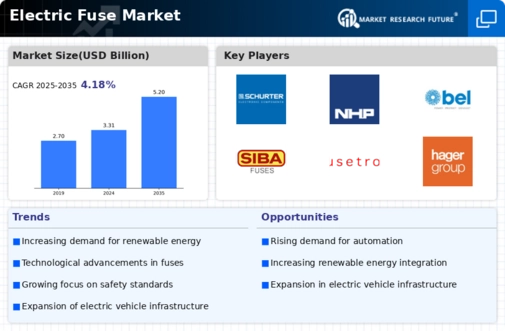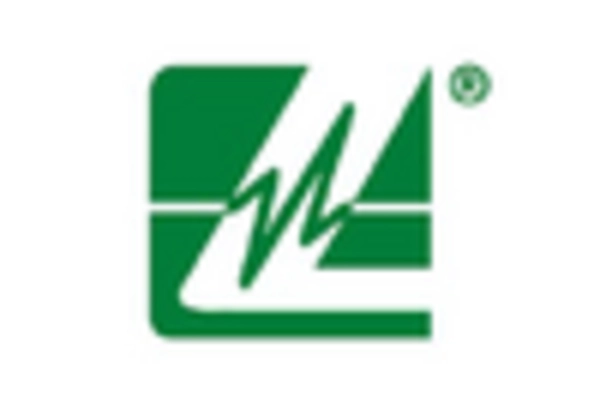Growing Construction Activities
The resurgence of construction activities across various sectors is positively impacting the Electric Fuse Market. As new buildings and infrastructure projects emerge, the demand for electrical installations, including fuses, is expected to rise. In 2025, the construction sector is projected to experience robust growth, particularly in residential and commercial developments. Electric fuses are crucial for ensuring the safety of electrical systems in these new constructions, as they protect against overloads and short circuits. This trend suggests a sustained demand for electric fuses, potentially leading to increased market opportunities for manufacturers and suppliers in the industry.
Increased Industrial Automation
The trend towards increased industrial automation is reshaping the Electric Fuse Market. As industries adopt advanced automation technologies, the complexity of electrical systems rises, necessitating enhanced protection mechanisms. In 2025, the manufacturing sector is projected to witness a significant uptick in automation, leading to a higher demand for electric fuses that can ensure the safety and reliability of automated processes. These fuses are essential for protecting sensitive equipment from electrical faults, thereby preventing costly downtimes and enhancing operational efficiency. This growing reliance on automation is likely to drive innovation and diversification within the electric fuse market.
Rising Demand for Renewable Energy
The increasing emphasis on renewable energy sources, such as solar and wind, is driving the Electric Fuse Market. As more renewable energy systems are integrated into the grid, the need for reliable protection devices, including fuses, becomes paramount. In 2025, the renewable energy sector is projected to account for a substantial portion of new energy installations, necessitating robust electrical protection solutions. Electric fuses play a critical role in safeguarding these systems from overloads and short circuits, thereby ensuring operational efficiency and safety. This trend indicates a growing market for electric fuses tailored to renewable energy applications, which could potentially enhance the overall market size and diversity of products offered.
Technological Innovations in Fuse Design
Technological innovations in fuse design are significantly influencing the Electric Fuse Market. Advances in materials and manufacturing processes are leading to the development of more efficient and reliable fuses. In 2025, the market is likely to see the introduction of smart fuses that offer enhanced features such as real-time monitoring and diagnostics. These innovations not only improve the performance of electrical systems but also align with the growing demand for energy efficiency and sustainability. As consumers and industries seek more advanced solutions, the electric fuse market is expected to evolve, presenting new opportunities for growth and development.
Expansion of Electric Vehicle Infrastructure
The rapid expansion of electric vehicle (EV) infrastructure is significantly influencing the Electric Fuse Market. As governments and private sectors invest heavily in EV charging stations, the demand for reliable electrical components, including fuses, is expected to surge. In 2025, the number of public charging stations is anticipated to increase dramatically, creating a need for specialized fuses that can handle the unique electrical loads associated with EV charging. This trend not only supports the growth of the electric fuse market but also encourages innovation in fuse technology to meet the specific requirements of EV applications, thereby broadening the market landscape.


















Leave a Comment